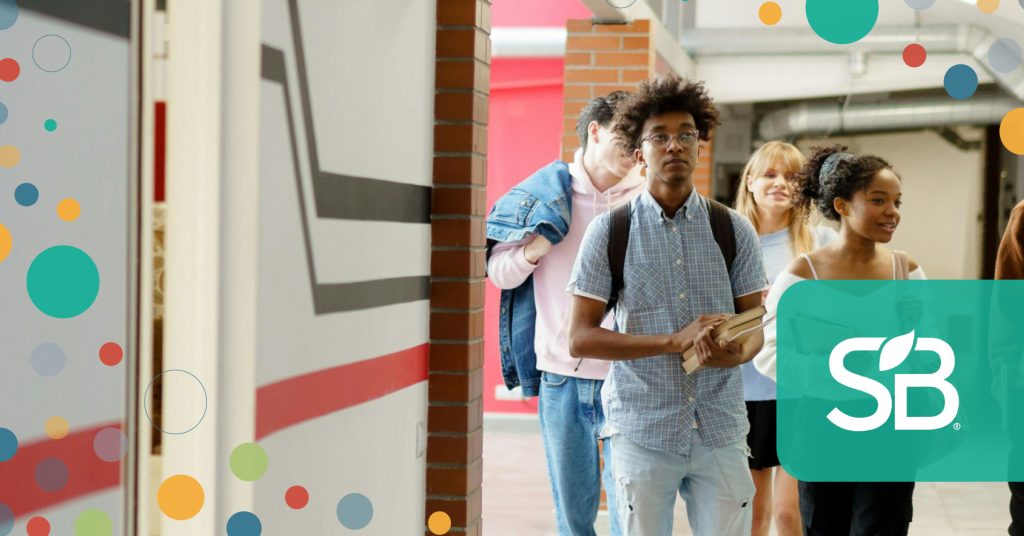Climate Uneducation in the US, Part 2: Failing High Schools
5 min read
1 in 3 US high school students say they feel helpless when it comes to climate change and its effects. Much of this can be attributed to the lack of adequate teaching on the subject, and instruction on how students can feel more empowered.
In part
one
of this four-part series, we discussed the significant gaps in climate change
education in United States primary schools. As we saw, 86 percent of K-12
teachers and 84 percent of
parents
of children under the age of 18 believe climate change should be taught in
schools; yet, less than
half of K-12 teachers have
any formal education in climate science and do not get enough support to teach
on the subject.
Unfortunately, the situation for high school kids does not look much better.
The unchanging climate in US high schools
According to an EducationWeek (EdWeek) Research Center
Poll
of 14- to 18-year-old high school students, 1 in 3 of them said they feel
helpless when it comes to climate change and its effects. Much of this
helplessness can be attributed to the lack of adequate teaching on the topic in
US high schools, and instruction on how students can feel more empowered.
Student Jia Sharma-Chaube told EdWeek about when her Advanced Placement
Environmental Science class at Benjamin Franklin High School in New
Orleans was taught that one of the world’s most profitable oil companies,
BP, coined the term “carbon
footprint”
and made it mainstream.
The 50 Liter Home: Lessons from a multi-industry global collaboration
Join us as leaders from Electrolux and Procter & Gamble share insights and progress to date on ‘The 50 Liter Home’ — a partnership aimed at reducing water consumption in the home, while also generating awareness that leads to better lifestyle choices for sustainable water use — Wednesday, Oct. 16, at SB’24 San Diego.
“My entire class was just like, ‘what the hell?’” she expressed. “They were all
just super angry about that. It feels like, you’ve obviously been lied to.”
Sustainable Brands® (SB) spoke to a high school student from
Virginia, who asked us not to publish her name or the high school she is
attending. She explained that while “climate change is briefly discussed in our
science and humanities courses, [it’s] nothing particularly further than the
general information from grade school.” She went on to say that she’s noticed
among her peers “a sort of lack of hope and initiative when it comes to climate
change discussions. I feel for the most part climate change is viewed as
irreversible, which is equally concerning as it is frustrating. I feel we could
be learning more about what tangible things we could do as individuals and as a
community to counteract climate change.”
Kids need to learn more, and they want to
The EdWeek poll also found that high school students are more likely than
adults to
agree
that climate change is caused by human industrial
activities,
even though many are still not fully aware of the underlying causes that are
heating up the planet.
The educational panorama in the US is complex; but considering how primary
education can shape societal outcomes, the stakes are high when a universally
pertinent topic is simply missing from curricula — especially when educational
institutions themselves are not sufficiently educated on it.
“I feel that most high schools are aware that climate change is caused by human
industrial activities but don’t fully understand the processes that are driving
it,” Jacob Stefonek, a science
teacher at Viera High School in Palm Bay, Florida, told SB.
Stefonek asserted that the onus is on schools to “improve climate change
education for these students by increasing available funding for labs,
activities and data-driven projects. Students need to be able to get outside to
measure and track changes within their own communities. I feel that’s the best
way to improve their skills as critical thinkers and build a connection with the
topic.”
Recent
research
has suggested that if climate change education were adequately provided to only
16 percent of high school students in high- and middle-income countries, there
could be a global reduction of 19 gigatons of C02 by 2050. As one of the main
drivers of global climate change, the US and its education leaders should pay
particular attention to this.
But even if efforts ramped up to integrate climate change into lesson plans, the
US’ piecemeal policy landscape would make consistency a challenge.
“Primary education on human-induced climate change in the US is often
inconsistent,” Dr. Jack
Thomas — author,
speaker, consultant and former president of Central State University — told
SB. “While some schools and educators do incorporate climate science into their
curriculum, coverage can vary significantly by region, district and even
individual school. Factors such as local educational policies, teacher
preparedness, and available resources impact the depth and quality of
instruction.
“As the evidence of climate change becomes more pronounced, there is an
increasing recognition of the need to educate students about its impacts and
solutions,” Thomas added. “This growing awareness could drive improvements in
curriculum development, teacher training, and educational resources dedicated to
climate science. However, the outcome will also depend on ongoing political,
economic and social
dynamics.
There is a possibility that climate change education might face setbacks due to
conflicting interests or resistance to change.
“Ultimately, the trajectory of climate change education will likely be shaped by
the collective commitment of educators, policymakers, and communities to
prioritize and integrate this essential knowledge into our educational systems.”
In part three of our series, we look at how climate change is represented in
US colleges and universities.







